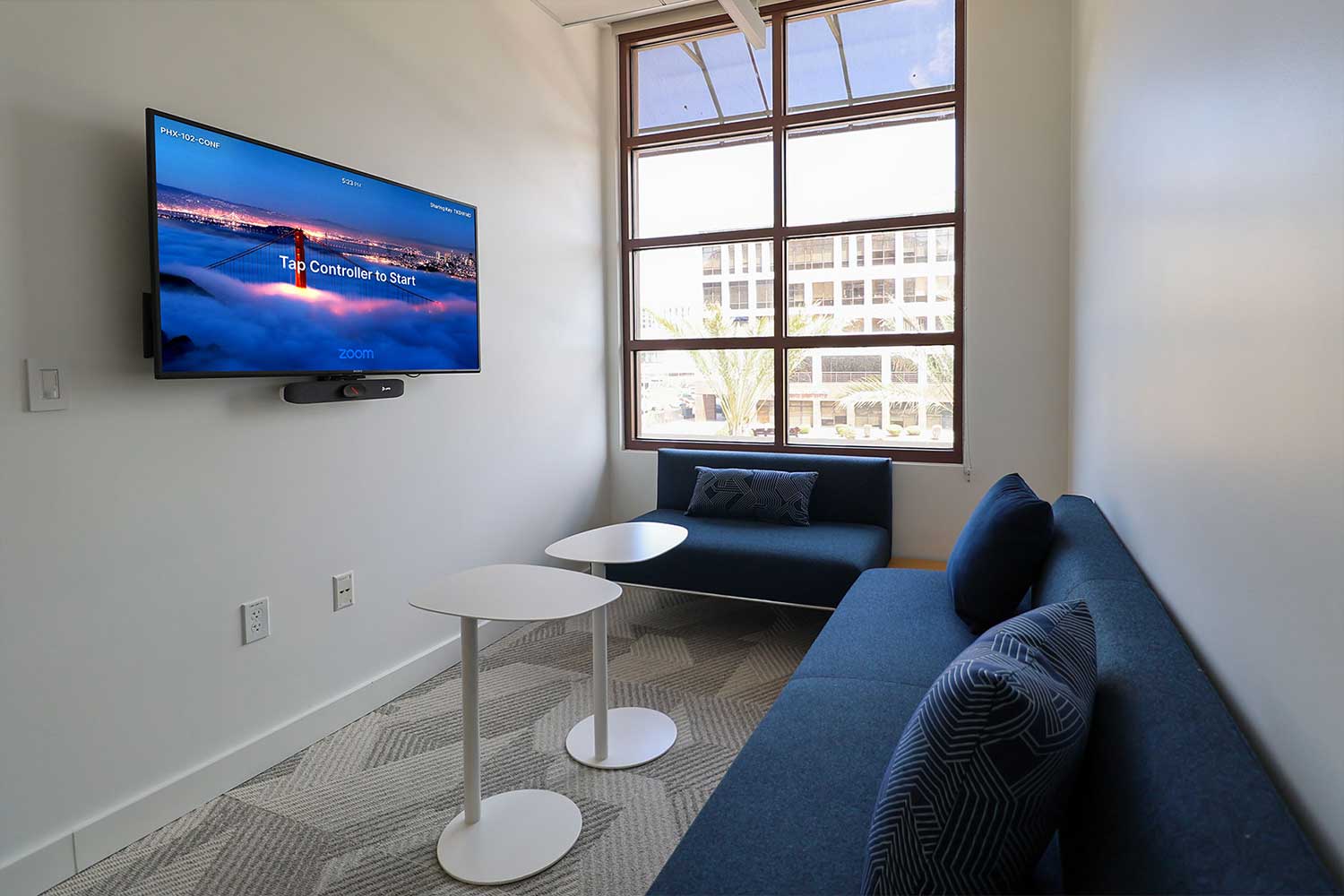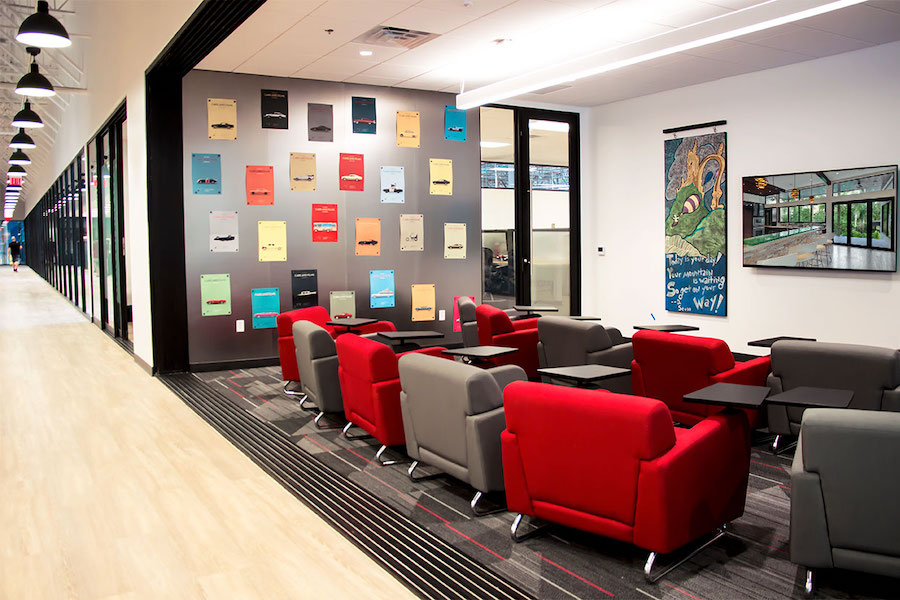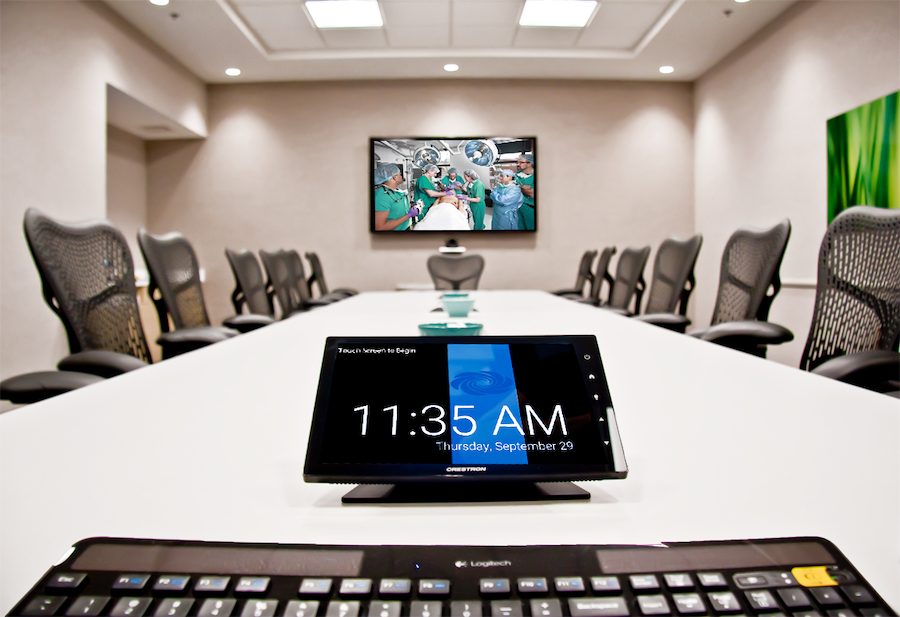Huddle rooms should be the easiest collaboration spaces in any enterprise, yet they often become the most frustrating. IT leaders face constant pressure to standardize hybrid meeting experiences, eliminate unreliable devices, and meet end-user expectations all while staying within budget and maintaining interoperability across platforms. And despite best efforts, many huddle rooms turn into a mix of outdated equipment, mismatched vendors, and inconsistent user experiences.
on Wednesday, 19 November 2025.
Posted in Conference Room, Conference Room Audio Video , Conference Room Design
Did you know that more than 90% of employees use streaming services daily and nearly everyone interacts with voice assistants or video calls at home? Those habits are shaping what they expect in the workplace.
Imagine this: At home, your employees can stream a 4K movie with a voice command, hop on FaceTime in seconds, and control their entire environment with a smartphone. But when they walk into your conference room, they’re fumbling with remotes, adapters, and a dozen logins just to start a meeting.
That disconnect isn’t just frustrating, it’s reshaping the future of commercial AV. Today’s workforce, students, and customers don’t separate their personal tech experiences from their professional ones. If Netflix can deliver instant, seamless, and beautiful user experiences, why can’t your workplace or campus?
This shift in consumer expectation is driving some of the most important AV trends we’re seeing today. And for organizations willing to embrace it, the payoff goes far beyond convenience, it’s about ROI, competitive advantage, and reimagining how people connect in your spaces.
on Tuesday, 09 September 2025.
Posted in Audio-Visual Systems, Boardroom Technology, Video Conferencing
As the new year begins, many organizations are taking stock of their technology investments and planning for the months ahead. In a world where hybrid work, global operations, and seamless communication are the norm, AV systems have moved from a “nice to have” to a critical operational asset.
But here’s the challenge: AV investments can sometimes feel like a black hole—expensive, difficult to manage, and hard to quantify in terms of ROI. The good news? With a strategic approach, you can turn your AV systems into one of the smartest investments your organization makes in 2025.
Here’s how to ensure your AV budget works harder, smarter, and delivers maximum value this year.
on Tuesday, 07 January 2025.
Best Practices for Safe Edge Computing for AV Management
Many of you reading this already understand edge computing, although it probably means different things to different people. By definition, edge computing is done at the edge of the network, close to the data source. In cloud computing, data is sent back to the cloud for processing. So is it just a fancy way of differentiating between distributed and centralized computing, some older terms for similar concepts? Perhaps, as the computer and software industries excel at developing new terminology for old concepts applied to new platforms.
We joke a little here, but let's look at an example. Apple's fancy term for software-enhanced photography and computational photography is taking advantage of the considerable processing power of today's iPhones to do some serious editing, enhancement, and tricks with images. Could that be done in the cloud? Yes, as Google Photos does with any browser-equipped device. So what are the advantages of doing this at the edge? If you have the computational power, edge computing can enable faster, more responsive applications. And the less potentially sensitive information that has to travel back and forth from the cloud, the more secure the application.
Security is important in edge computing. And edge computing is important in network monitoring and management of AV devices in internal networks. You don't want all those inherently insecure devices directly connected to the internet, as they present many attack points into your network for would-be hackers. Instead, an edge appliance or computer sits at the "edge" of your network, monitoring and collecting information and sending it back to the cloud to aggregate into other management systems. But how do you ensure the security of the edge appliance sitting in your Scottsdale, AZ offices from the wild and woolly internet? That’s what we explore further in this blog post.
on Tuesday, 16 August 2022.
Posted in Edge Security Scottsdale, AZ, Edge Security
Insights from Data Help Create More Adaptive Workplaces
As you are aware, this is a data-driven world. Activity data is used everywhere to help shape products, cities, experiences, and just about everything you can think of. Sensor and GPS technology, software interfaces, and smartphones are the catalysts for much of it, but in the workplace, there are other methods for collecting information and gaining insights.
For instance, companies have used occupancy sensors for years to understand building usage patterns better, manage capacity planning, and create more energy-efficient environments. In today’s hybrid work environments, they are even more useful. Now, companies can measure how much to stock the snack areas based on heat maps showing the space's usage. Similarly, companies can also gauge the use of attractive common areas and other perks. Armed with data, they make better decisions on the usage of space, specific facilities, and plan for future needs.
Nowhere is data more useful than in the planning for meeting and collaboration spaces. Today’s systems measure how much rooms are used, what equipment, how many people are in a meeting, and more. With hybrid work environments, the future for balancing in-office versus remote work is being defined in real-time. With advanced workplace analytics, a company in Scottsdale or anywhere in the world can study usage and create more adaptable and optimized environments. Keep reading below to learn more about how analytics can shape your workplace.
on Wednesday, 13 July 2022.
Posted in Workplace Analytics Scottsdale, AZ, Workplace Analytics
Using Commodity Hardware and Software Solutions to Provide Specialized Solutions
Once a term previously only used in business and production discussions, it seems that everyone is now acutely aware of the global supply chain. The pandemic shutdowns caused production and logistical disruptions usually only seen in wartime situations. While everyone has heard of automobile production slowdowns due to a critical shortage of specialty semiconductor chips, those in the AV and IT spaces also know it’s affected AV systems that don’t get as much attention as automobiles.
What does this mean? Just like Ford cars sitting in vast lots waiting for chips that enable them to work, specialty AV solutions have also experienced production and availability delays. Whether it's room control systems or integrated AV soundbar solutions for meeting rooms, the deployment of video conferencing and collaboration solutions is challenged in many organizations.
As workforces return to offices, this presents more of a challenge. With hybrid work environments, the need to reimagine communication and collaboration between in-office and remote workers is even more important, yet the latest technology that facilitates it is not readily available.
Fortunately, there are alternatives. While there’s no substitute for the specialized chipsets that provide critical functionality that make cars run, there are solutions to integrate software with commodity hardware to provide the missing pieces in the deployment of communication and collaboration solutions. Let’s explore how a managed services model can help your Scottsdale, AZ organization meet its hybrid workforce technology challenges.
on Friday, 17 June 2022.
Posted in Managed Services, Scottsdale, AZ, Managed Services
Zoom Rooms Smart Gallery Lets Everyone Enjoy More Participatory Meetings
The past two-plus years of the pandemic brought Zoom meetings into the modern lexicon. As work went remote in companies small and large, video conferencing became the go-to approach for meetings and interaction. Zoom is not the only video conferencing and collaboration solution, but its ease of use made it the standard for many organizations.
on Friday, 20 May 2022.
Posted in Zoom Rooms, Phoenix, AZ, Zoom Rooms
Hearing is Understanding
It wasn’t too long ago that conference room audio consisted of a lowly speakerphone. In the U.S., some of the first speakerphones were speaker add-ons to the ubiquitous Bell system phones in executive offices and boardrooms. In the 1980s and 1990s, Polycom’s (Poly today) popular Soundstation speakerphones did much to diminish the use of the phrase “can you hear me now” at the start of every conference call.
Audio is still critically important in today’s age of video conferencing, hybrid workplaces, and fully remote teams. For individuals working on a laptop or even a smartphone, being heard is not problematic with the ever-higher quality of microphones in these devices and software DSP that can mitigate ambient noise. In a small huddle room, all-in-one devices like a Poly soundbar with a camera and microphone employ beam-forming microphones that do a reasonably good job capturing a small group. However, put a large group of people in a conference room, and the auditory challenges increase significantly.
Let’s take a closer look below at some of the issues and ways to improve sound quality and intelligibility in conference room audio-video systems.
on Tuesday, 10 May 2022.
Posted in Conference Room Audio Video – Tempe, AZ, Conference Room Audio Video
 Huddle Room Technology in the Enterprise: What Works and What Doesn’t
Huddle Room Technology in the Enterprise: What Works and What Doesn’t 







